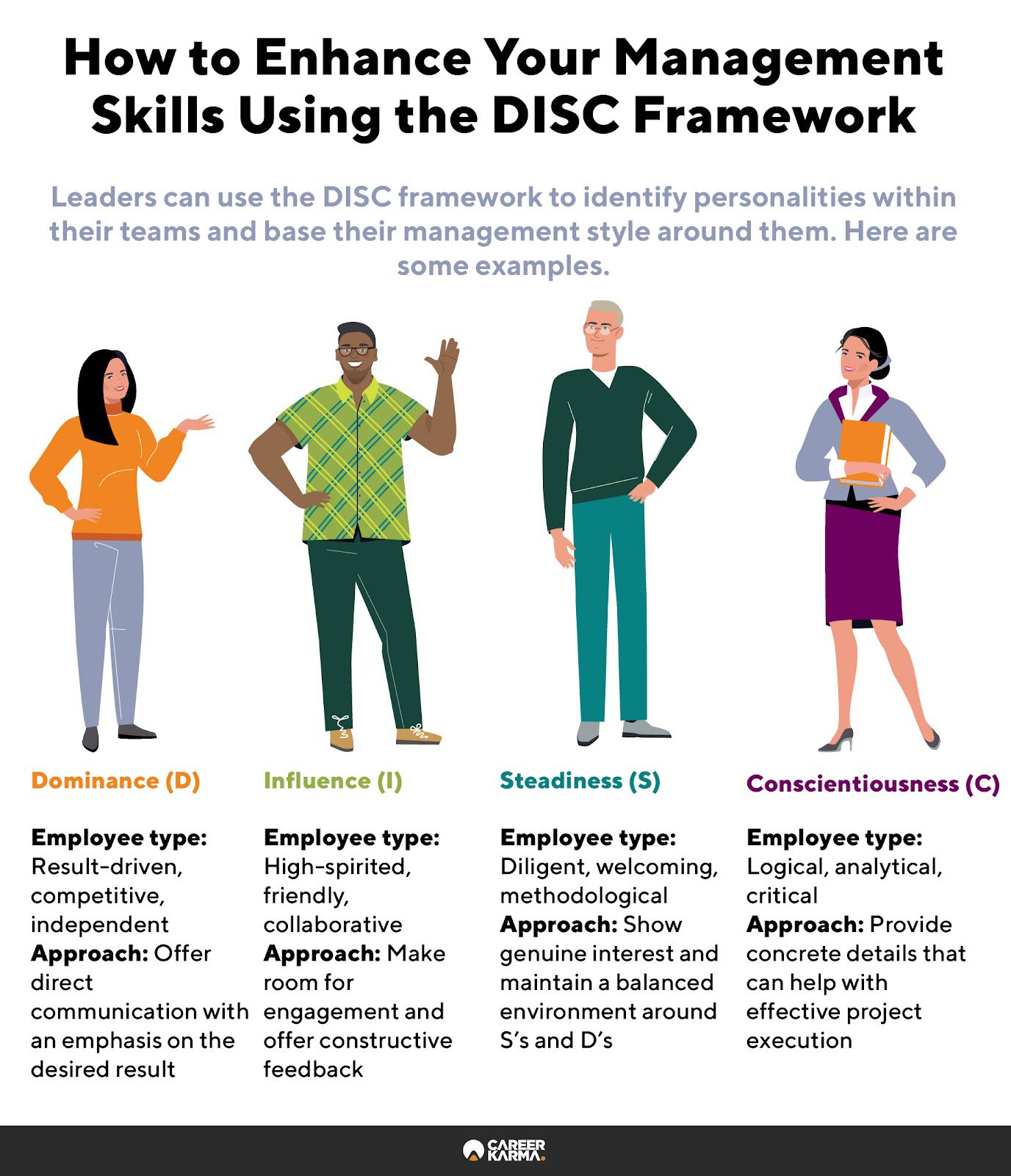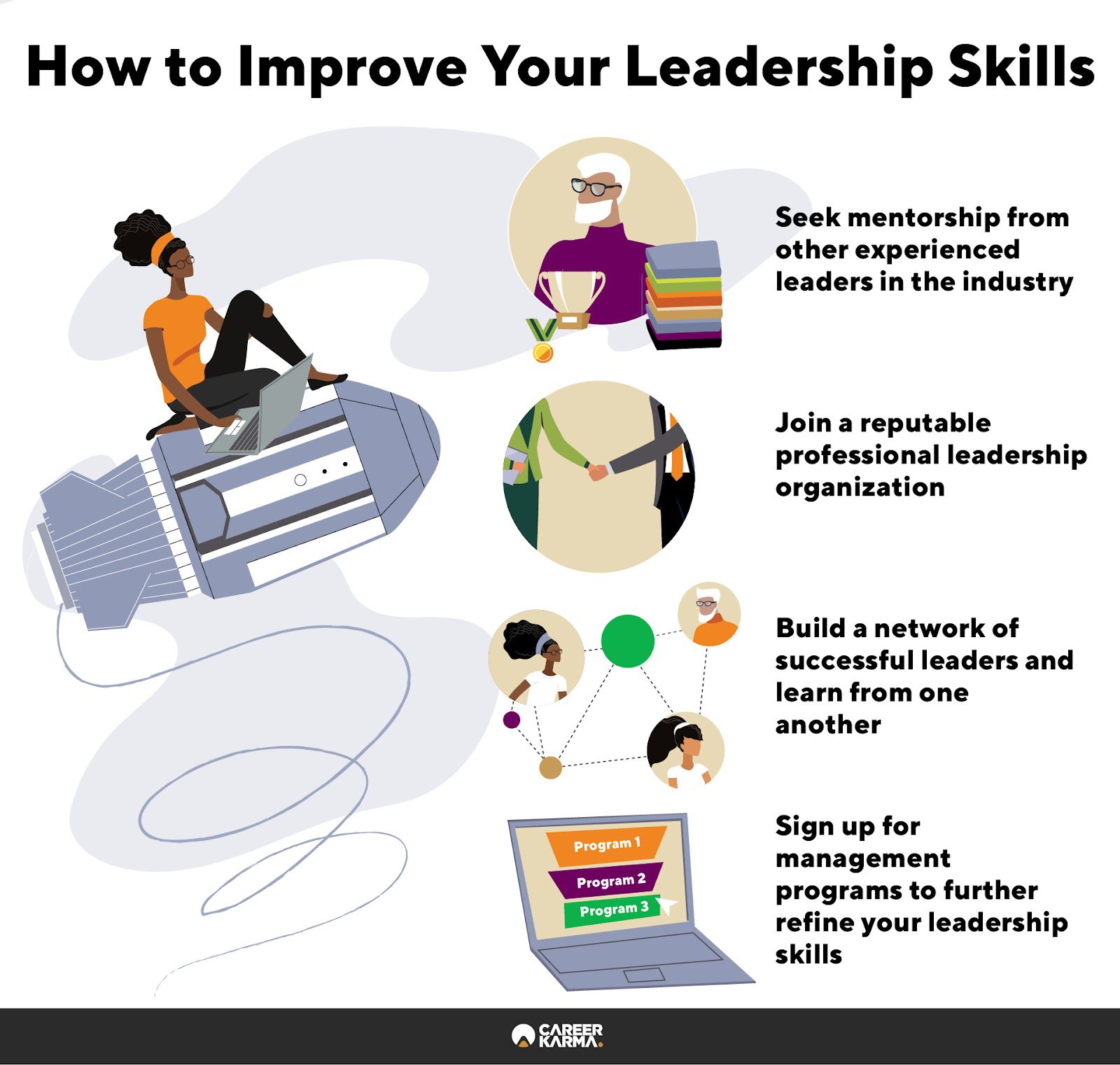Attaining any leadership position comes with many challenges, especially in tech. For instance, you may realize that strong technical know-how is not enough to lead a team of professionals without complementary, well-polished soft skills.
The need for leaders to step up their team management skills encompasses all industries, not only tech. A research article by the Executive MBA Council (EMBAC) argued that the workplace is rapidly changing, and leaders face the challenges of managing their diverse teams. It will be safe to assume that, at this rate of change, even the most prepared leaders may feel ill-equipped to adjust accordingly.
Therefore, leaders will have to devise innovative ways to communicate with, motivate, delegate duties to, and manage their employees to drive organizational growth.
Learn to overcome common leadership challenges in tech by earning a Michigan State University online graduate degree, graduate certificate, or non-credit certificate.
Start learning with Michigan State University.5 Common Leadership Challenges in Tech Today
What are the top challenges leaders in the tech industry face today? How can you stand up to these challenges as a leader or an aspiring one? Although the challenges in the tech leadership space are dynamic, the following are some of the most common recurring ones:
1. Guiding Change
Leading an organization in the rapidly evolving business world can be demanding even for the most prepared. Therefore, it is paramount that leadership development schemes include equipping leaders to manage, adapt, and lead change. This is because having a grounded knowledge of tackling complex leadership challenges will come in handy when faced with one.
2. Effective Communication
Another challenge most leaders face is a lack of effective communication. Poor communication can hinder organizational growth as well as cause internal crises.
To encourage team productivity, it is essential to define responsibilities and promote transparency and expectations within the organization. You will also need an authentic, consistent, and clear communication style as well as the ability to listen.
3. Stress Management
Managing a diverse team and a bulk of projects while trying to meet deadlines can sometimes be overwhelming, especially in a fast-evolving workspace.
Stress can significantly reduce your productivity, impair your decision-making, and negatively affect your team’s outputs. Therefore, you should know when to ask for help and delegate duties when you feel overwhelmed. You must also understand the individual personalities of your team members and their strengths and weaknesses before delegating tasks to them.
4. Team Building
Building connections among your team members can be a daunting task, especially in this era of remote work. When team members feel isolated, their productivity can drop significantly alongside their motivation. Focusing on team building using innovative approaches can substantially increase organizational productivity.
There is a common assumption that leaders in the tech space lack the human element arising from their soft-skill deficiency, making them inadequate to lead a team. Unfortunately, this assumption is gradually taking a stronghold, especially as remote work makes it even more challenging to build a cohesive unit.
5. Micromanaging
Too much management can affect a team’s confidence and flexibility and encourage excessive reliance on the leader. While a leader has to check on the team’s progress, micromanaging a team can lead to quite the opposite outcome. Leaders should provide guidance and coaching rather than direct every project execution step.
Giving your team ample space to think creatively could help boost their collective problem-solving abilities, foster interpersonal relationships, and facilitate learning.
Learn how you can acquire the skills to tackle the challenges mentioned above head-on with online programs from Michigan State University that teach leadership skills development.
How to Develop Your Team Management Skills

Effective leadership requires comprehension of your areas of strength and weakness and being mindful of the team you are leading by understanding members’ different personalities, strengths, and aspirations. This knowledge equips you to create an alignment of the organizational goals with their professional aspirations. While this may be quite a challenge, different models have been developed to give you a starting point.
For instance, the Big Five framework, also known as the OCEAN (Openness, Conscientiousness, Extroversion, Agreeability, Neuroticism) model, has been an effective tool to distinguish and identify personality traits. This model extracts five factors that can explain a person’s personality—how curious, organized, outgoing, friendly, or sensitive a person can be.
While this framework holds strong relevance in detecting personality types, there is another model that complements the OCEAN Model. The DISC model categorizes human expressions into four distinct behavioral types: Dominance, Influence, Steadiness, and Conscientiousness (DISC).
The OCEAN model has been widely used in academia, while the DISC model has gained prominence in the business world. Nevertheless, both frameworks, together with professional leadership courses, can equip leaders with grounded knowledge on how to identify the personalities within their team and provide effective leadership.
Let us dive deep into the DISC framework and unravel the guidance it brings to you as a leader or an aspiring one and how you can enhance your team’s productivity with this knowledge in your toolbox.
Dominance
Based on the evidence, individuals with this trait are mostly result-driven and most likely to be the first to jump on projects. They derive satisfaction from taking on challenges and striving to achieve the required outcome. They can also be assertive and forceful—stemming from their need to get the job done as soon as possible.
Other team members may perceive these individuals as impatient and uncooperative due to their strong-mindedness, high sense of competition, and independent mindset. Moreover, these individuals may appreciate blunt and direct communication.
So, emphasizing the desired result over the task can effectively communicate tasks to the D personality category. On the other hand, suppose you as a leader also share this trait; your team may benefit from a less blunt but supportive leadership.
Influence
Although these groups of individuals may possess the agility of the D personality type, they are most likely geared towards collaborative work rather than working solo. Referred to as “Inspiring” or “Inducement” in some other DISC assessments, individuals who fall in this category appreciate team building and feel the need to garner consensus through their influence and fostering relationship building within the team.
Others in the team may perceive the I’s as friendly, supportive, and understanding. They also appear relatable, talkative, and high-spirited.
As a leader, notice the I’s and give them an audience whenever they have something to say or ask a question. Moreover, when communicating with them, be as relatable as possible. If you share the I’s personality trait as a leader, it is essential to pay close attention to details and not shy away from giving constructive feedback as your team’s success will depend on it.
Steadiness
Also known as “Supportive” or “Submission” in some models, the S personality traits are diligent and welcoming of others. They appreciate a methodological way of doing things and prefer maintaining a stable environment. Individuals with this trait do not typically respond well to change as they are easily disoriented by it. Members of the team may view them as patient, calm, and meticulous. They may be regarded as supportive and loyal.
As a leader, you should pay attention to this category of individuals and show genuine interest in them, especially with the outspoken and agile D’s whom the S’s may perceive as aggressive and unfriendly. You should be able to devise ways to strike a balance between these two categories.
Conscientiousness
This group of individuals is guided by logic and a strong analytic mindset rather than gut feeling. They prefer a stable environment and appreciate any opportunity to showcase their expertise and work quality. Also sometimes called “Compliance” or “Cautious”, the C’s are often critical of any proposed change to their routine; they often question the need for change.
Members of the team may view them as perfectionists, thoughtful, and meticulous. However, their desire to produce flawless results may cause a delay in project completion.
The C personality type requires concrete details and facts to execute their tasks. As a leader, it’s important to ensure that you have all the details and facts when communicating tasks to this type of person.
It is best practice to consider all the personality types within your team so you can evenly balance your communication with the entire team.
How to Improve Your Leadership Skills

One way to improve your leadership skills is through mentorship. Consider joining reputable professional leadership organizations where you can seek out potential mentors with vast experience and impeccable leadership reputations. You can also build a network of successful business leaders to understand what drives their leadership approaches.
An alternative and effective way to hone your leadership skills is by completing management or leadership training and development programs. Michigan University’s online Master of Science in Management, Strategy and Leadership program and Strategic Leadership and Management certificate programs are designed by industry experts who are well-versed in the field and will teach you how to overcome today’s challenges and prepare for tomorrow’s leadership decisions.
These programs can also help drive your motivation as you learn alongside and engage with peers aiming to develop or improve their leadership skills. Program outcomes include:
- Build communication, collaboration, and management skills relevant to today’s diverse workforce.
- Understand a detailed analysis of current trends and innovations and how to harness them for organizational growth.
- Develop creative skills in problem-solving and strategic decision-making.
In a fast-changing workplace, leaders who possess both technical and well-polished soft skills are more likely to drive meaningful change. Therefore, your ability as a leader to guide and manage your team regardless of your organizational work model can cast a ray of sunlight on your professional career and help set you apart.
About us: Career Karma is a platform designed to help job seekers find, research, and connect with job training programs to advance their careers. Learn about the CK publication.




